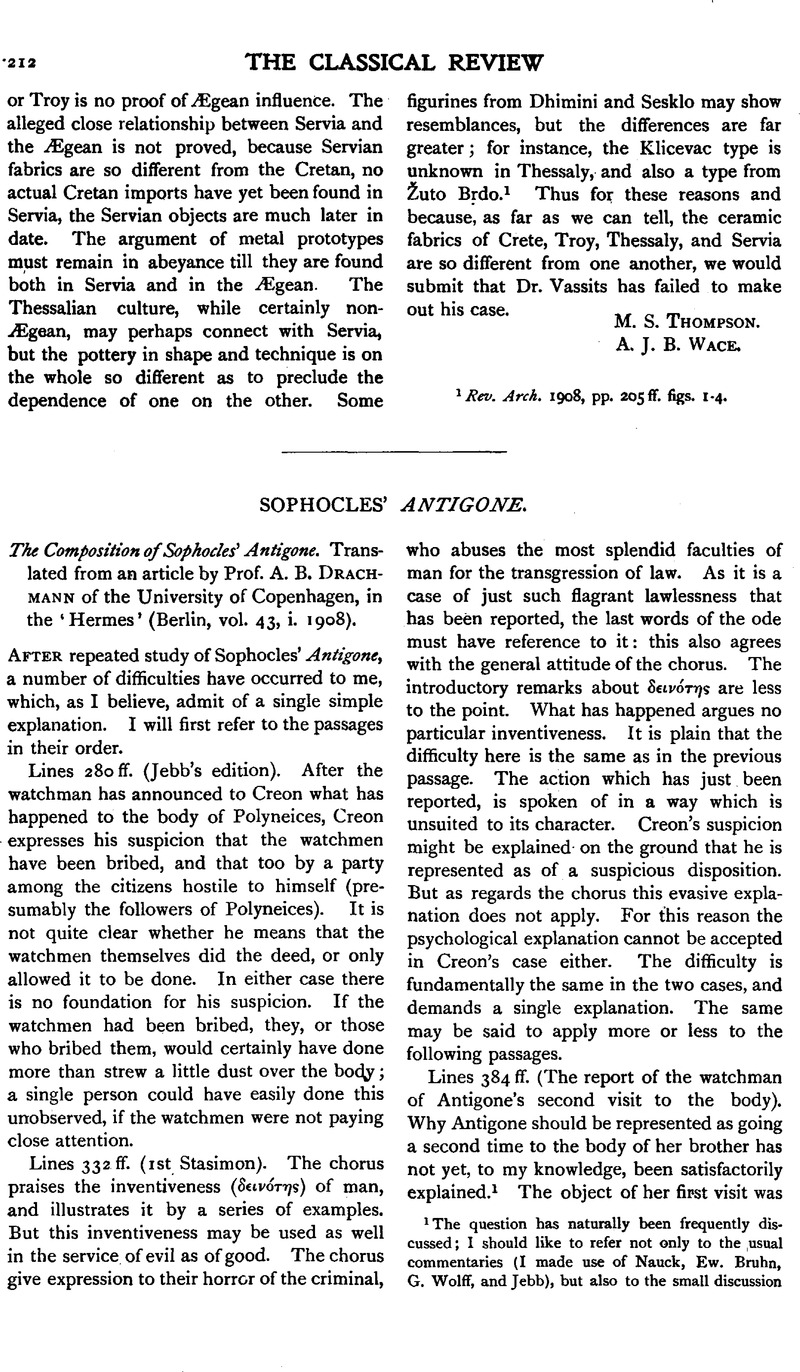No CrossRef data available.
Article contents
Sophocles' Antigone
Review products
Published online by Cambridge University Press: 27 October 2009
Abstract

- Type
- Original Contributions
- Information
- Copyright
- Copyright © The Classical Association 1909
References
page 212 note 1 The question has naturally been frequently discussed; I should like to refer not only to the usual commentaries (I made use of Nauck, Ew. Bruhn, G. Wolff, and Jebb), but also to the small discussion between Nake, and Gringmuth, , in Neue Jahrb. 1894, pp. 260, 602 and 819Google Scholar. Jebb acknowledges frankly that he cannot solve the problem; Nake saw that the second visit of Antigone has no apparent motive. Others suggest the frightening away of wild beasts, and other such explanations.
page 231 note 1 For sacrifice at burial see Rohde, , Psyche 2, p. 231Google Scholar. Sophocles had to take care that the ceremony performed by Antigone should bear the closest possible resemblance to a regular burial.
page 214 note 1 Apollodorus does not say how Antigone was discovered; but he implies that it was not at the burial itself.
page 215 note 1 In Pausanias and Philostratus we are given to understand that Polyneices was burned (on the same pyre as Eteocles). In Sophocles there is no reference to the burning of Eteocles (e.g. Ant. 24 f. 27 f. 196, 203 f. 9O0ff.). That is probably part of the older tradition which is found in Apollodorus.


